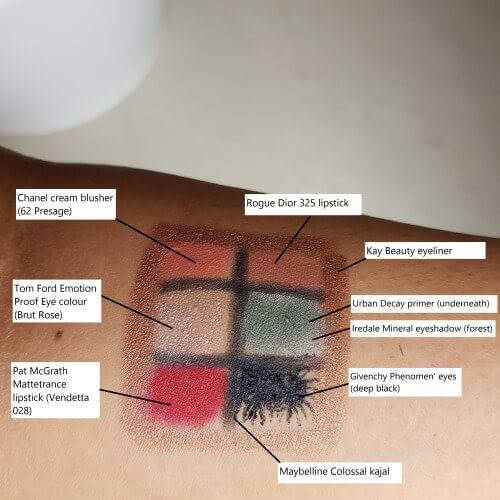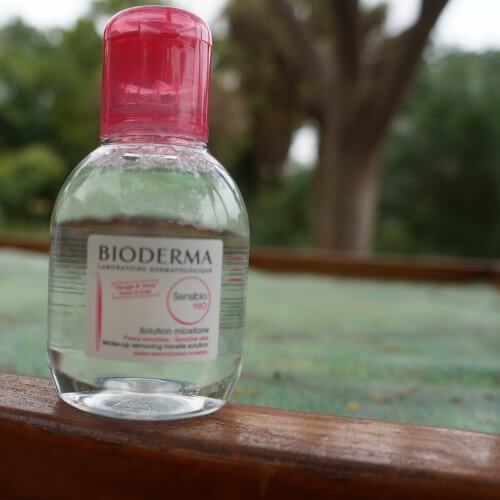Micellar waters are a very fancy name for a mild cleanser with the following characteristics: they have mild surfactants (or cleaning agents); are non-foaming and contain moisturising ingredients.
You can read about the technical detail on how micellar water or facial cleansers work at this BLOG.
What am I testing and why?
I am road-testing Bioderma’s micellar water, specifically the claim that it removes make-up.
Before photo
After applying a copious mix of waterproof, pigmented and shiny make-up, my forearm looked like this:

I then pressed down a pre-soaked (in micellar water) cotton pad on the above patch and counted to 5. Finally, I wiped over this area (quite firmly) exactly 4 times.
After photo

The results are excellent: what remains is only the pigmented Pat McGrath lipstick. Looking at the ingredients label, I am not surprised by the product’s good performance…
The ingredients
The primary surfactant is the no 2 ingredient on the list – so there is a significant amount of it – and its PEG-6 Caprylic/Capric glycerides. This is commonly used in micellar waters as it’s a gentle cleanser. Cetrimonium bromide maybe here as a surfactant – but I think its an anti-bacterial agent here.
Most of the other ingredients present in this product are designed to moisturise the skin. They include Fructooligosaccharides, Mannitol and Xylitol, all of which are humectants. A humectant’s job is to draw water from the deeper epidermis and dermis allowing the skin to feel smoother (source: Draelos)
To buy, or not to buy?
I like this product and I would buy it again, mainly because repeated use has not dried my skin out. It has a simple formula and it works, except against Pat McGrath’s lipsticks, which I am beginning to think that no micellar water I test can remove!
SourceL Draelos ZD, The science behind skin care: Moisturizers. J. Cosmet Dermatol. 2018; 17:138-144
